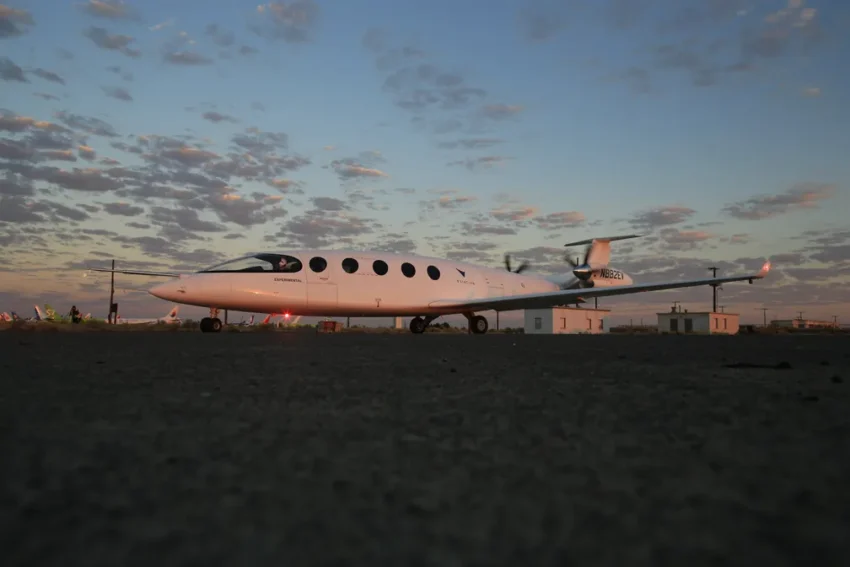Aviation Looks to Reduce its Carbon Footprint
The aviation has come a long way since the early days of flight over a century ago. Planes can now fly farther and carrying more passengers than ever before. However, this growth has come at a cost to the environment. Aircraft emit carbon dioxide and other greenhouse gases that contribute to climate change. With rising environmental concerns, plane manufacturers are exploring ways to build more sustainable aircraft designs. One promising concept is zero emission aircraft that do not rely on fossil fuels.
Emerging Technologies Driving the Transition
Several technologies show promise to help aircraft achieve zero emissions in the future. Battery power is being investigated to replace traditional jet fuel. While current battery technology does not provide enough energy density to power large passenger planes over long distances, steady improvements may make electric planes viable options for shorter flights. Hydrogen fuel cells that combine hydrogen with oxygen to produce Zero Emission Aircraft are another clean energy technology under development. Producing hydrogen sustainably from renewable sources like solar or wind power could support zero-emission aircraft. Novel engine designs like open rotor engines or hybrid electric options are also in the works to boost efficiency and reduce pollution. Advances in light but strong materials will help build lighter airframes to reduce overall energy needs.
Government Regulations Pushing Development
Regulatory pressures are helping push the aviation sector towards lower emissions designs. The European Union’s proposed “Green Deal” aims to cut the sector’s carbon footprint in half by 2050, including through investment and incentives for zero-emission flight technologies. Other nations and regions are implementing similar targets and policies. Some countries have also implemented carbon offsetting programs that require airlines to balance their emissions through forest preservation or renewable energy projects. While these policies currently focus on reducing emissions from existing planes, the ultimate goal is getting fully electric or hydrogen aircraft into service within the next couple decades. Meeting these aggressive deadlines will require sustained efforts from both regulators and manufacturers.
Challenges of Moving from Concept to Reality
For all the promise, transitioning from concepts to certified zero emission aircraft Challenges still faces major technical hurdles. Batteries or fuel cells powerful enough to propel a commercial airliner remain out of reach with today’s technologies. Engineers must solve weight, packaging, and safety challenges to develop aviation-grade power systems. Refueling and recharging infrastructure will need development as well to support these new aircraft types. Aircraft designs will likely need to change to accommodate the weight and dimensions of new power units. New types of motors, propellers, and thrust mechanisms suitable for aviation loads require extensive testing and validation. The appropriate fuels also need to be scaled up from lab levels to meet industrial demand. Regulators will have to establish certification standards for safety approving these revolutionary designs that break from traditional jet propulsion. Overcoming all these difficulties is a complex, long-term effort that will require sustained global cooperation between industry, academia and governments. However, steady progress indicates the challenges are surmountable given sufficient R&D resources and commitment to the goal of zero-emission flight.
Piloting the Transition
Early-adopter airlines and aircraft manufacturers are starting to test and evaluate viable paths toward zero-emission aircraft. Over a dozen companies worldwide have flight demonstrated small electric aircraft conceptsi. While limited to a few passengers over short distances so far, these trials gain valuable practical experience. Regional aircraft manufacturers are pursuing electrification and hydrogen options scaled up for 19-40 seat commuter airliners aiming for service entry late this decade. Major OEMs like Airbus, Boeing and Embraer are invested in both battery and fuel cell research centers with working prototypes in development. Some envision hybrid-electric designs entering commercial service in the 2030s, before transitioning fully electric larger aircraft into routes by 2050. Meanwhile, eVTOL air taxi startups are racing Toward certifying all-electric vertical takeoff aircraft potentially transforming intra-city mobility within this decade. Though challenges remain, these early commercial endeavors will help establish performance benchmarks and identify key technology needs to accelerate the goal of zero-emission air travel.
The airline industry’s ongoing march toward zero emission aircraft signifies both an environmental necessity and technological revolution. Meeting global targets will require unprecedented collaboration and a willingness to invest in transformative solutions over incremental changes. While major technical and infrastructure hurdles remain, advances are being made in materials, battery and hydrogen technologies that could someday enable clean, fossil-free flight. With dedicated research efforts and regulatory policies supporting development, visions of fully electric commercial aircraft could become a reality within the coming decades. Through determined progress on zero-emission flight, the aviation sector aims to continue growing sustainably for generations to enjoy the wonders of air travel.

